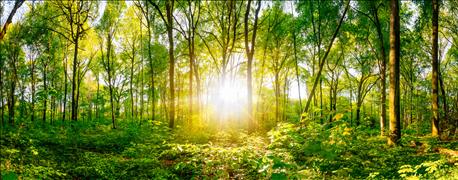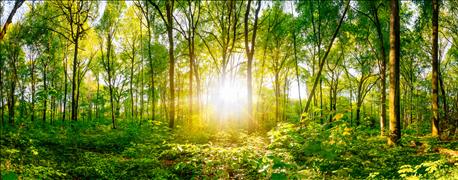December 14, 2016

Now that we are in the dead of winter, the wind is howling, and the snow is flying, it might be a good time to think about installing a windbreak or restoring an existing one. Your need for a windbreak is measured by expected benefits.
For humans, windbreaks can provide an effective snow barrier, an improved farmstead working environment and up to 40% in heat-energy savings.
For crops, windbreaks offer protection from moisture loss and hot, drying winds. Crop yields may drop right next to windbreaks, and yields generally decrease at distances of about two to 10 times windbreak height. However, this area can be utilized by planting grasses or legumes.

Windbreaks benefit livestock through shelter, improved feed efficiency and reduced death, particularly in open areas. Wildlife habitat and food sources can be created, as well.
Once you have decided to plant a windbreak, here is a basic checklist to follow:
• Locate the windbreak where it will be most effective.
• Allow enough space for plants.
• Select tree and shrub species suitable for your site and soil types.
• Prepare the site, and fence areas accessible to livestock.
• Plan for adequate labor and equipment for planting.
• Protect young seedlings once they are planted.
• Provide proper long-term windbreak management.
Location, location, location! Since prevailing Illinois winter winds are northerly and northwesterly, the windbreak should be oriented along the north and west sides of your property. Windbreak efficiency is usually six times out from the height of the trees. Drifting snow will pile up at a distance one to three times the tree height. Keep windbreaks at least 100 feet from buildings and feedlots. Windbreaks can be U-, L- or E-shaped, and do not have to be in straight lines. Avoid planting across old feedlots, manure piles or barnyard drainage, as evergreens do poorly in these locations.
Plant a variety of species to guard against pest and disease outbreaks, and foliage density at different heights (deciduous versus evergreens), longevity, and degree of downwind protection. Young trees and shrubs provide lower levels of density, and old, tall trees give greater protection farther out. Evergreens, being dense, provide benefits year-round. Evergreens and deciduous trees should be planted in rows at least 15 to 30 feet apart to make sure the deciduous species do not shade out the evergreens, and to allow for room for maintenance equipment.
Typically, five rows of trees make an effective windbreak, starting with a row of dense shrubs, three rows of trees and a fifth row of flowering shrubs. If space is limited, stagger your planting and use fewer rows with less crowding. Even two rows of evergreens can provide protection. For a list of tree and shrub species for your specific needs and location, consult your local Extension office.
Site preparation is also important. For good plant survival, remove all competing vegetation in the fall prior to spring planting. Plow and disk the area for good soil preparation, as long as soil erosion is not a major issue. Plan to control competing vegetation for at least three years after planting. Once your plants arrive, keep them moist and cool, and plant as soon as possible. Do not let the plants or roots dry out. Avoid planting in dry soil, and plant with a planting machine, shovel or tree planting bar. If possible, keep the plants watered during dry spells to encourage root growth and establishment. You may also need to protect young trees from deer browse the first few years.
With a little planning, you can design and establish an effective and efficient windbreak, which is good to have on those cold, blustery winter days.
Miller is a horticulture professor at Joliet Junior College in Joliet and a senior research scientist in entomology at The Morton Arboretum in Lisle. Email your tree questions to him at [email protected].
You May Also Like




